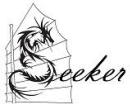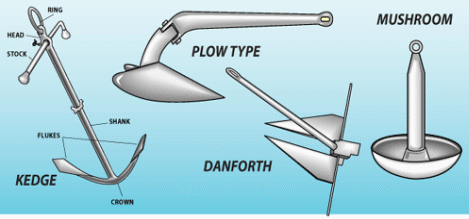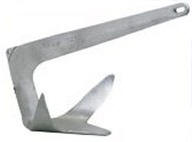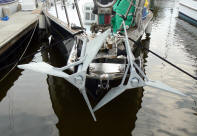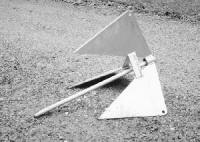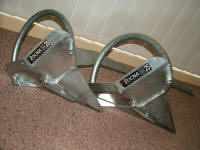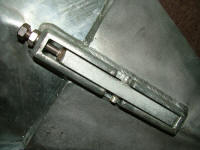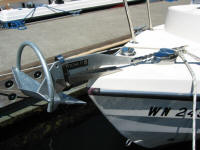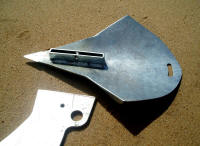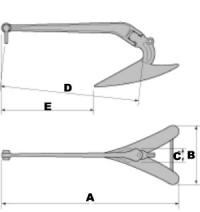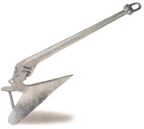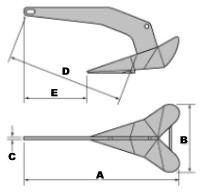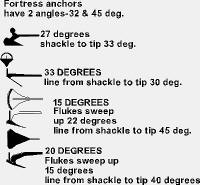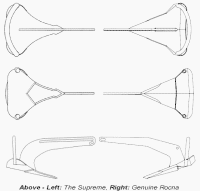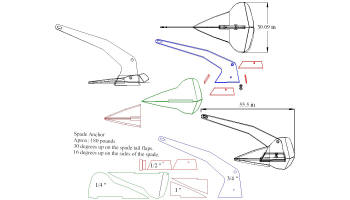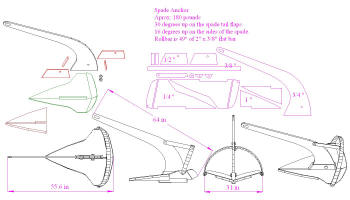Anchors
Anchor and Rode, aka Ground Tackle
Build Your Own Anchors
For SV Seeker we currently plan to carry home built anchors that we can build as needed. Go2Marine has a 176 pound, galvanized, Claw anchor for $535 + shipping. Around $660 with shipping. That $660 buys enough scrap steel for 4 anchors, Add another $130 hot dip galvanizing and you've got a comparable anchor for less than $300. Building your own anchors makes sense if you're already building a steel boat and especially if you're taking your tools with you. You're bound to loose one sooner or later and you may even be able to sell a few. The Bulwagga anchor is a good design built from simple flat plates that can be stored in pieces and bolted together when needed. If it's only going to be used for the occasional storm and mainly used as ballast below deck then have it galvanized is not even necessary. The delta, plow type anchor with a pivoting shank helps the anchor set and stay set even with moderate changes in the direction of pull. They as well can also be constructed from flat plate steel with some additional welding and they are a good candidate for everyday use on the bow. Having a shank that can be disconnected will also help a little bit when manhandling the thing is needed. A spade anchor like the Raya or Rocna can also have it's shank made detachable for easier storage. And the roll bar of a Rocna could also be make detachable. A little reverse engineering: A 154 pound Rocna has 417 square inches of surface. I sized mine up to 540 sq inches. With 380 more sq inches in the shank for a total just under 930 sq in. About 800 sq inches total for a Rocna 154 pound anchor. Steel weights .2833 pounds per cubic inch. So 154 lbs / 800sq.in. / .2836 lb = .68 inch thick plate. So 3/4 inch plate puts us in the ballpark. The forward half of the spade amounts for the majority of the weight. So the spade could be 1/4 steel with a 1 in steel plate laminated onto the forward half of the spade. The forward half would be about 200 sq in at 1.25 in thick and weight 200 * 1.25 * .2836 = 70 lbs. The rear portion of the space would be 340 * .25 * .2836 = 24 lbs. If we make the shank 3/4 in steel it would weight 380 sq.in * .75 in * .2836 lb = 80 lbs. Add another 10 pounds for the side plates, the box for the shank, and a piece of flat bar to make a roll bar, and the total weight comes to: 10 + 80 + 24 + 70 = 184 pounds ballpark.
Rode SizeThree-strand Nylon is typically used for anchor rode. WestMarine says the general rule of 1/8" of line diameter for every 9' of overall boat length. For 75' that's a hair over 1". That roughly agrees with Sail Buyers Guide who also states that a good working rule for a combined rode is a boat length of chain. WestMarine goes on to say that the proof coil, Grade 30, chain should be 1/2 the rode diameter and the shackles should be one size larger than the chain. BoatUScom stops at 60 ft but the trend would put 75 feet boats with an anchor working load at 3000 lbs and storm load at 6000 lbs. Rope & Chain SuppliersR&W Rope http://rwrope.com
800-260-8599
|
